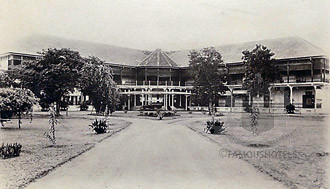
Sofitel Centara (Railway Hotel) Hua Hin
While Europe has its Riviera on the Mediterranean or the Cole d’Azur in the south of France, Thailand has Hua Hin.The beach houses of Thailand’s elite in Hua Hin became retreats for health and relaxation where they could also hide from the heat and humidity of Bangkok. In 1923, the Railway Hotel opened to provide accommodation for the growing number of visitors who flocked to the small sea-side resort. Here we tell the story of the transformation of the small fishing village of Samoriang into the resort town of Hua-Hin. It has made a name for itself with its scenic beach, friendly people and cool, crisp ocean breezes that buffet the resort year round. The Railway Hotel has become the Sofitel Centara Grand Resort and Villas, renovated and up-to-date and is still - as it always was - a great resort.

Rooms